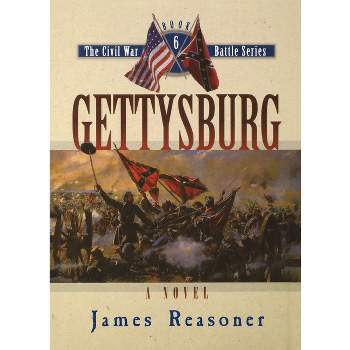Sponsored
Naval Strategies in the Civil War - by Jay W Simson (Paperback)

About this item
Highlights
- One of the most overlooked aspects of the American Civil War is the naval strategy played out by the U.S. Navy and the fledgling Confederate Navy, which may make this the first book to compare and contrast the strategic concepts of the Southern Secretary of the Navy, Stephen R. Mallory, against his Northern counterpart, Gideon Welles.
- Author(s): Jay W Simson
- 240 Pages
- History, United States
Description
Book Synopsis
One of the most overlooked aspects of the American Civil War is the naval strategy played out by the U.S. Navy and the fledgling Confederate Navy, which may make this the first book to compare and contrast the strategic concepts of the Southern Secretary of the Navy, Stephen R. Mallory, against his Northern counterpart, Gideon Welles. Both men had to accomplish much and were given great latitude in achieving their goals.Mallory's vision of seapower emphasized technological innovation and individual competence as he sought to match quality against the Union Navy's numerical superiority. Welles had to deal with more bureaucratic structure and to some degree a national strategy dictated by the White House. The naval blockade of the South was one of his first tasks-for which he had but few ships available--and although he followed the national strategy, he did not limit himself to it when opportunities arose.
Mallory's dedication to ironclads is well known, but he also defined the roles of commerce raiders, submarines, and naval mines. Welles's contributions to the Union effort were rooted in his organizational skills and his willingness to cooperate with the other military departments of his government. This led to successes through combined army and naval units in several campaigns on and around the Mississippi River.
Naval Strategies of the Civil War then is the story of the very different approaches each man took in defining and executing the naval struggles of the conflict. Until now, it has been mostly an untold story lost in the general histories of the war. In the end, the author concludes that success favored flexible organization rather than desperate, albeit creative, measures.
From the Back Cover
"I am satisfied that, with the means at our control. and in view of the overwhelming force of the enemy at the outset of the struggle, our little navy accomplished more than could have been looked or hoped for...and, yet, not 10 men in 10,000 of the country, know or appreciate these facts." --Confederate Secretary of the Navy Stephen R. Mallory
One of the most overlooked aspects of the American Civil War is the naval strategy played out by the North and the South. Only recently have documents come to light that reveal the forgotten story of Confederate efforts to secure naval assets in Europe that could not be secured at home in the face of Federal advances on Southern coasts and waterways. Much is said of the ironclad initiatives played out at Hampton Roads and on the Mississippi in the spring of 1862, and some attention is given to the commerce raiders and blockade-runners. In general, however, the ships and sailors of the Civil War have been overshadowed by the soldiers who fought at Manassas, Shiloh, Antietam, Gettysburg, Vicksburg, and other locations.
In this overview of the Civil War navies, Jay W. Simon looks first at the two men who determined the policies of their respective governments: Stephen R. Mallory and Gideon Welles. He portrays Welles as a component of a unified Federal war strategy who knew when to adapt and improvise in order to overcome the enemy. Mallory, however, is forced to constantly rethink, refine, and rework his resources at home and abroad. Interestingly, Mallory found a workable scheme by adopting several measures devised by Robert E. Lee during the general's early tenure as overseer of the coastal defenses of South Carolina and Georgia. The evolving Confederate strategy also introduced most of the modern roles carried out by commerce raiders, submarines, and naval mines.
A keen distinction between Mallory and Welles is apparent in terms of the cooperation they received from their army counterparts. For the North, this led to several successful army-navy operations along the Southern coast and on the Mississippi. For the South, the lack of resources boded ill for such inter-departmental efforts. In the end, Simson finds that flexible organization tended to succeed whereas desperate, although creative, measures usually failed.
Shipping details
Return details
Guests also viewed











